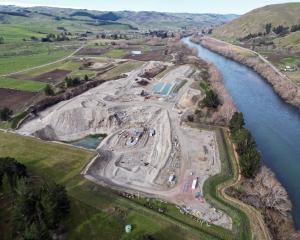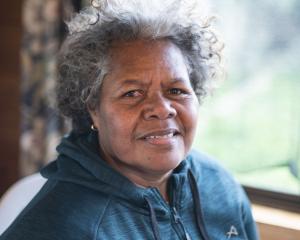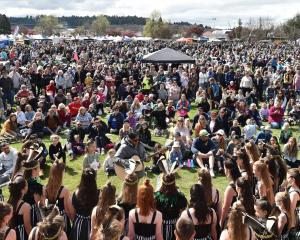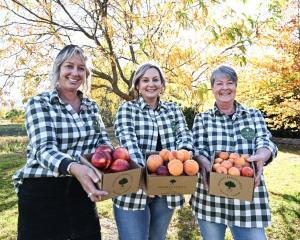The 2015 export apple harvest begins in Central Otago this week and although crops are expected to be down compared with 2014, the industry is in good shape, a leader says.
Cox's orange and honeycrisp varieties will be some of the first to be picked in the harvest, which lasts about 10 weeks.
Pipfruit New Zealand director and Teviot Valley orchardist Stephen Darling said hail during the growing season damaged fruit and would likely result in reduced tonnage this year, but the industry was expanding with new plantings.
Last year's crop contributed an estimated $23 million to the Otago economy from more than 14,000 tonnes of fruit, an increase of about 40% on crops from 10 years ago.
Demand from Asia was helping drive expansion.
New plantings of varieties including Fuji, Pacific rose and Pacific queen were to supply India, China, Taiwan, Thailand and elsewhere.
Organic apple grower and Springvale Orchard owner Chris Denniston said growth in the organic sector had also been strong.
Demand had got to the point where he could not supply enough apples.
''It's very positive ... demand is totally international. We go everywhere - the States, the UK, Asia.''
Central Otago was ideal for organics because of cold winters, which killed pests, he said.
Mr Darling said exports last year were produced from less than two-thirds of the planted area in production in 2005.
Due to a downturn in markets, the planted area decreased from 670ha in 2005 to 350ha in 2007, but had increased to about 400ha.
''The remaining orchardists [undertook] significant restructuring on orchard, removing older varieties that did not achieve acceptable prices and ... replanted newer varieties in new high density plantings.''
Trees per hectare had increased from 660 trees per ha up to 1500-2000 trees per ha.
The new planting style aimed to provide higher yields several years sooner in the life of a tree.
As the volume of fruit produced in the region increased, labour requirements would also, Mr Darling said.
''I think it's a very positive period going forward ... There's a mix of new opportunities emerging.''
Those included demand for the kanzi variety in Europe and for honeycrisp in the United States.
The main varieties grown in Central Otago were Cox's orange, Braeburn, jazz and royal gala.












